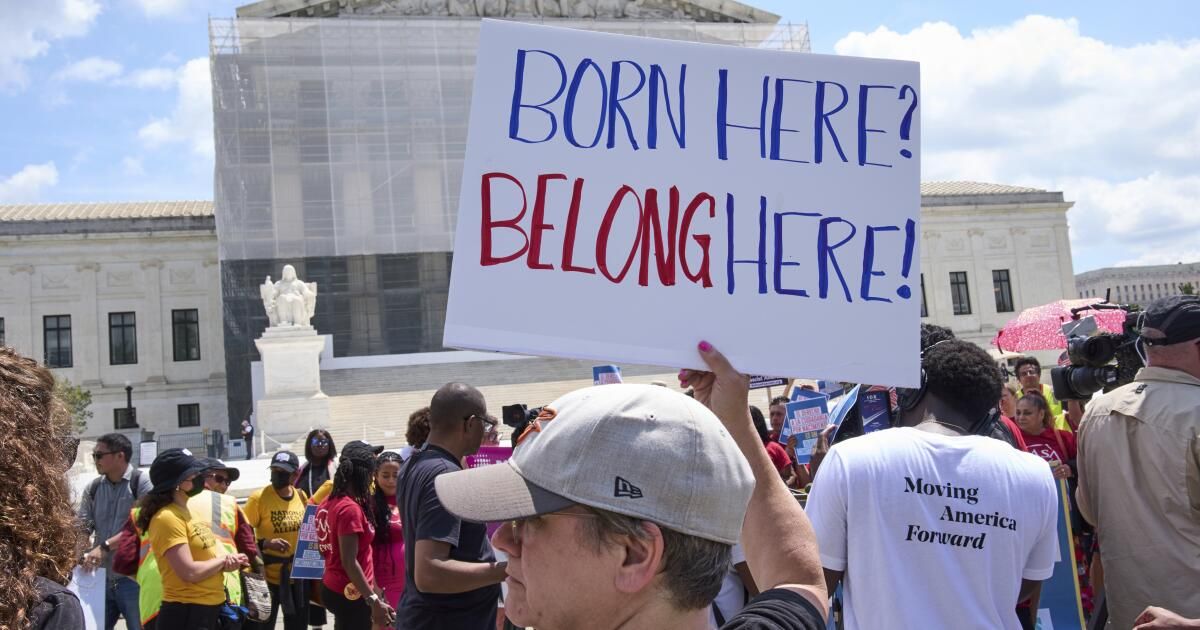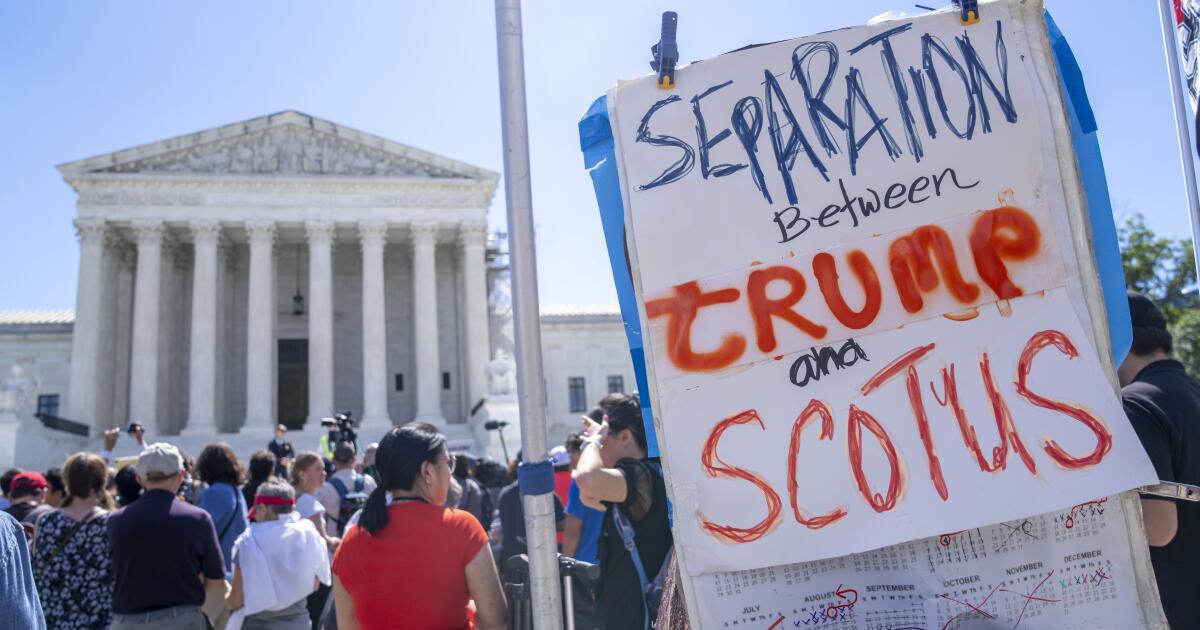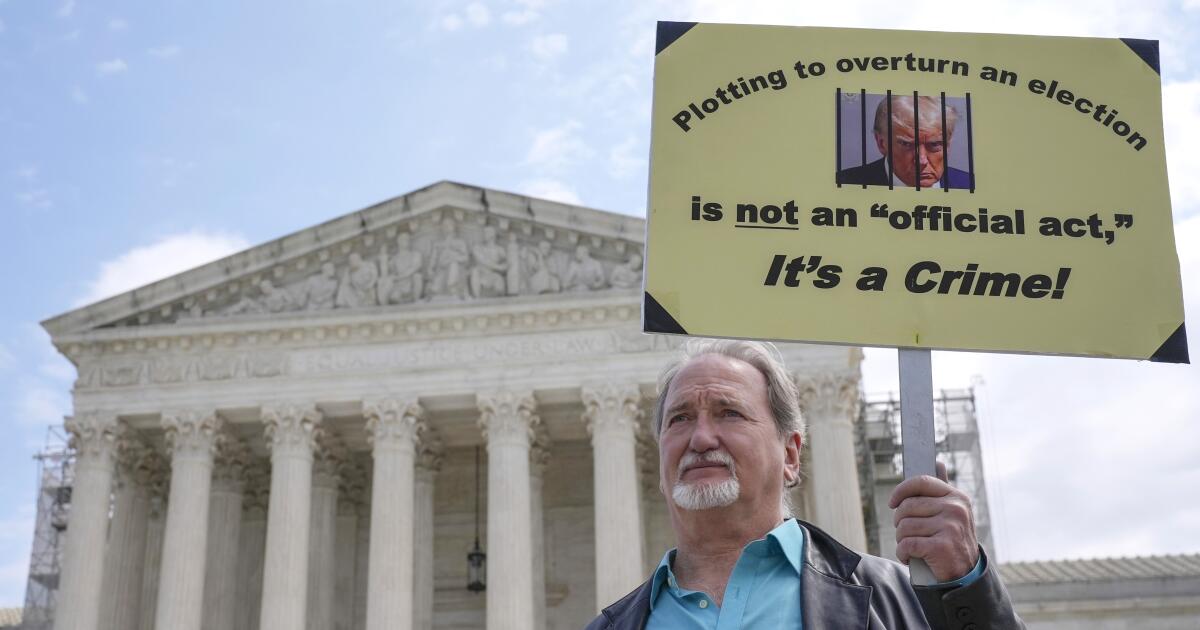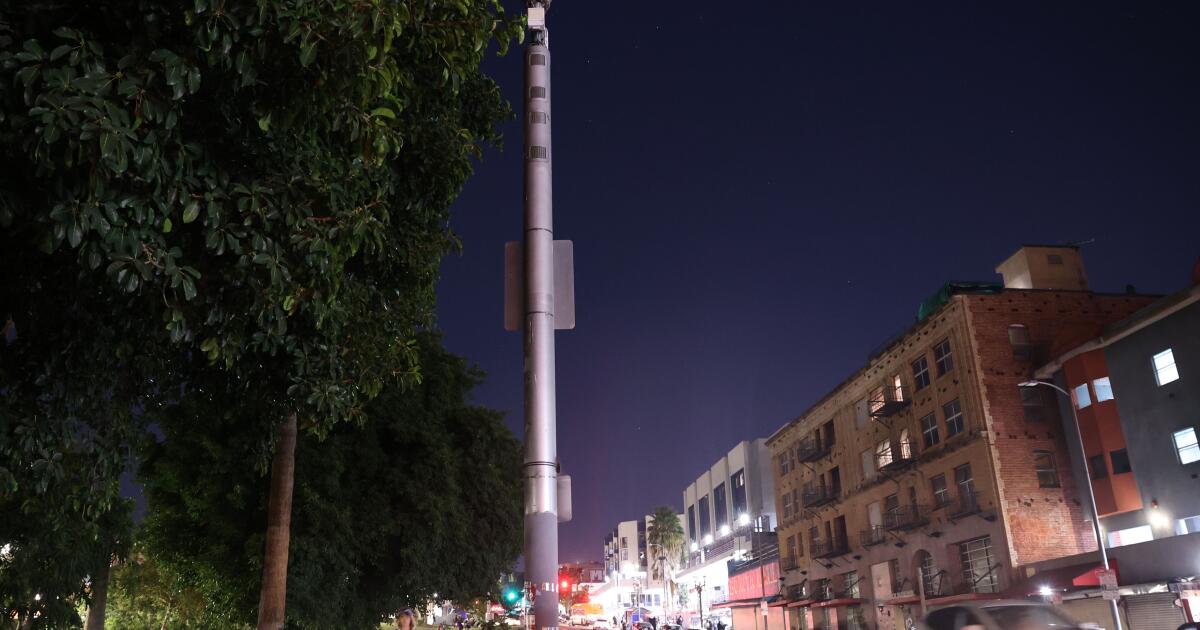The Supreme Court on Friday seriously hit the separation of powers by maintaining that federal courts cannot issue precautionary measures to stop the unconstitutional actions of the president and the federal government. At a time when President Trump affirms unprecedented powers, the court made it much harder to restrict his unconstitutional actions.
The case, Trump vs. Casa, involved the executive order of the president who ended the citizenship of birth rights. The first sentence of the 14th amendment establishes that “all persons born or naturalized in the United States, and subject to its jurisdiction, are citizens of the United States and the state in which they reside.” In 1898, in the United States vs. Wong Kim Ark, the Supreme Court said this means that all those born in the United States, regardless of the migratory state of their parents, are citizens of the United States. The court explained that “subject to the jurisdiction of the same” was destined to exclude children only born from soldiers in an invading army or those born of diplomats.
Trump's executive order directly contradicted this precedent and our national understanding of citizenship through the decree that only those born here to citizens or residents with green cards are also citizens. Immediately, several federal courts issued national mandates to prevent this from entering into force.
But the Supreme Court, in a 6-3 division in the ideological lines, said that federal courts lack the power to issue such orders. Judge Amy Coney Barrett, writing for conservative judges, declared that such universal mandates “probably exceed the equitable authority that Congress has granted to federal courts.” Judge Clarence Thomas, in a concurrent opinion, put this succinctly: “Today ends the” increasingly common “practice of federal courts that issue universal medital mandates.”
In fact, the Court's opinion indicated that a federal court can grant only the plaintiffs in a lawsuit. This is a radical limit in the power of federal courts. Nothing in any federal law or the Constitution justifies this restriction in the Judiciary. The Court did not rule on the constitutionality of Trump's executive order that ended the citizenship of birth law, but made it much harder to stop what a clearly unconstitutional act is.
The practical consequences are enormous. It would mean that to challenge the constitutionality of a presidential action or a federal law, a separate lawsuit must be submitted in the 94 federal districts. It means that the law will often be different depending on where a person lives. Sunly, it could mean that there could be two people born in identical circumstances in different federal districts and one would be a citizen, while the other would not. This makes no sense.
It will mean that the president can take an unconstitutional act and even after the courts in some places write it down, continue elsewhere until all the federal districts and all the courts of federal appeals have invalidated him. In fact, the Court said that a Federal Court can only relieve the appointed plaintiff, which means that in the context of the citizenship of birth law, each father affected by the Executive Order of Birth Citizenship will need to sue separately. Never before the Supreme Court has imposed such restrictions on the ability of the courts to provide relief against unconstitutional acts.
The court maintains open class actions as a way to avoid this. But the requirements for class action litigation are often burdensome, and the Supreme Court has made it much harder to bring such costumes.
Justice Sonia Sotomayor in a powerful dissent expressed what this means. She wrote: “No right is safe in the new legal regime created by the Court. Today, the threat is for the citizenship of birth law. Tomorrow, a different administration can try to confiscate the firearms of the citizens respectful of the law or prevent people of certain religions from being of the policies of most of the majority of the parties. It makes the constitutional guarantees significant in name only for any individual.
That there is no doubt what this means; The Supreme Court has greatly reduced the power of federal courts. And he has done it at a time when the Federal Judiciary can be our only railing to protect the Constitution and democracy. As Judge Ketanji Brown Jackson explained in his dissent, “the decision of the court to allow the Executive to violate the Constitution with respect to anyone who has not yet sued is an existential threat to the rule of law.” It is a surprising and tragic limit of the power of the courts to enforce the Constitution.
Erwin Chemendnsky, dean of the UC Berkeley Law Faculty, is a writer who contributes to the voices.
Perspectives
Times Insights It offers an analysis generated by the voices content to offer all points of view. Insights does not appear in any news article.
point of view
Perspective
The following content generated by AI works perplexed. Los Angeles Times editorial staff does not create or edit the content.
Ideas expressed in the piece
- The decision of the Supreme Court in Trump v. Casa, Inc. Severely undermines the separation of powers by eliminating federal courts of authority to issue precautionary measures throughout the country against unconstitutional executive actions, creating a dangerous precedent for the presidential ex -health[1][3].
- The Executive Order of President Trump ending the birth citizenship of birth directly violates the 14th amendment and the long -standing precedent (United States v. Wong Kim Ark), However, the ruling prioritizes the limitations of the procedure on constitutional protections[1][4].
- By restricting relief only to the appointed plaintiffs, the decision forces redundant litigation in the 94 federal districts, guaranteeing inconsistent results (for example, a child who wins citizenship, while another refuses in identical circumstances)[1][3].
- The suggestion of most of the majority that class actions could replace universal precautionary measures ignore how the Supreme Court itself has systematically eroded the viability of class action, leaving the application of practically unattainable rights[1][3].
- The dissent of Judge Sotomayor warns that this allows future administrations to violate constitutional rights (for example, take firearms or suppress the religious assembly) with a minimum judicial appeal[1][4].
Different views on the subject
- The majority of the Supreme Court said that universal precautionary measures “probably exceed the equitable authority” granted by Congress, emphasizing judicial restriction and compliance with legal limits instead of constitutional concerns[1][3][4].
- The ruling specifically avoids supporting Trump's Birth Law Citizenship, focusing on judicial overreach: precautionary measures throughout the country allow individual district judges to cancel the policies throughout the country, interrupting legal uniformity and separation of powers of powers of powers[2][4].
- Class actions remain a viable mechanism for broad relief, ensuring rigorous procedure standards (e.g.[3][4].
- The decision is aligned with the textualist principles cited by Judge Thomas, who argued that universal mandates lack historical precedents and transform the courts into “itinerant commissions” aimed at executive actions[1][3].
- Limit precautionary measures to the parties with the permanent position preserves the role of the Courts of Appeal in the resolution of circuit divisions, preventing contradictory decisions from paralyzing federal governance[2][4].












